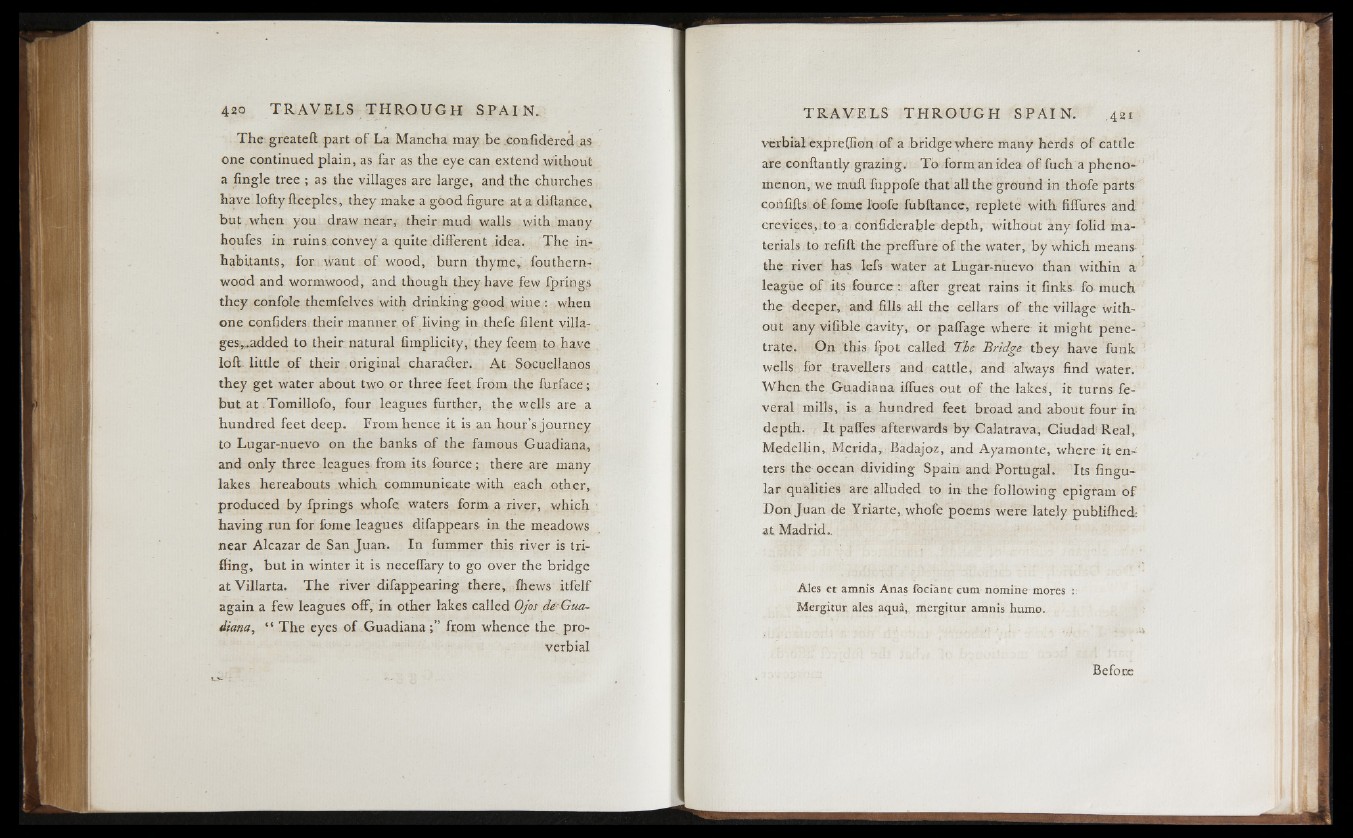
The greateft part o f La Mancha may be .confidered.as
one continued plain, as far as the eye can extend without
a fingle tree ; as the villages are large, and the churches
have lofty fteeples, they make a good figure at a diftanee,
but .when you draw near, their mud walls with many
houfes in ruins convey a quite .different idea. The inhabitants,
for want of wood, burn thyme, fouthern-
wood and wormwood, and though they have few fprings
they confole themfelves with drinking good wine : when
one confiders their manner of living in thefe filent villages,*.
added to their natural fimplicity, they feem to have
loft, little o f their original character. At Sacudíanos
they get water about two or three feet from the furface;
but at .Tomillofo, four leagues further, the wells are a
hundred feet deep. From hence it is an hour’s journey
to Lugar-nuevo on the banks of the famous Guadiana.,
and only three leagues from its fburce; there are many
lakes hereabouts which communicate with each other,
produced by fprings whofe waters form a river, which
having run for fome leagues difappears in the meadows
near Alcazar de San Juan. In fummer this river is trifling,
but in winter it is neceffary to go over the bridge
atVillarta. The river difappearing there, fhews itfelf
again a few leagues off, in other lakes called Ojos de Guadiana,
“ The eyes of Guadiana;” from whence the proverbial
verbial expreftion of a bridgewhere many herds o f cattle
are conftantly grazing. To form an idea o f fuch a phenomenon,
we rnuil fuppofe that all the ground in thofe parts
confills of fome loofe fubftance, replete with fiffures and
crevices,ito a corifiderable depth, without any folid materials
to refill the preflure of the water, by which means-
the river has lefs water at Lugar-nuevo than within a :
league of its fource:: after great rains it finks fo much
the deeper, and fills, all the cellars of the village without
any vifible cavity, or paffage where it might penetrate.
On this fpot called The Bridge they have funk
wells , for travellers and cattle, and always find water.
When the Guadiana iffues out of the lakes, it turns fe-
veral mills, is a hundred feet broad and about four in
depth. I t palles afterwards by Calatrava, Ciudad Real,
Medellin, Merida, Badajoz, and Ayamonte, where-it enters
the ocean dividing Spain and Portugal. Its lingular
qualities are alluded to in the following epigram o f
Donjuán de Yriarte, whofe poems were lately publiihedc
at Madrid.,
Ales et amnis Anas lbciant cum nomine mores ::
Mergitur ales aqua, mergitur amnis humo.
Before